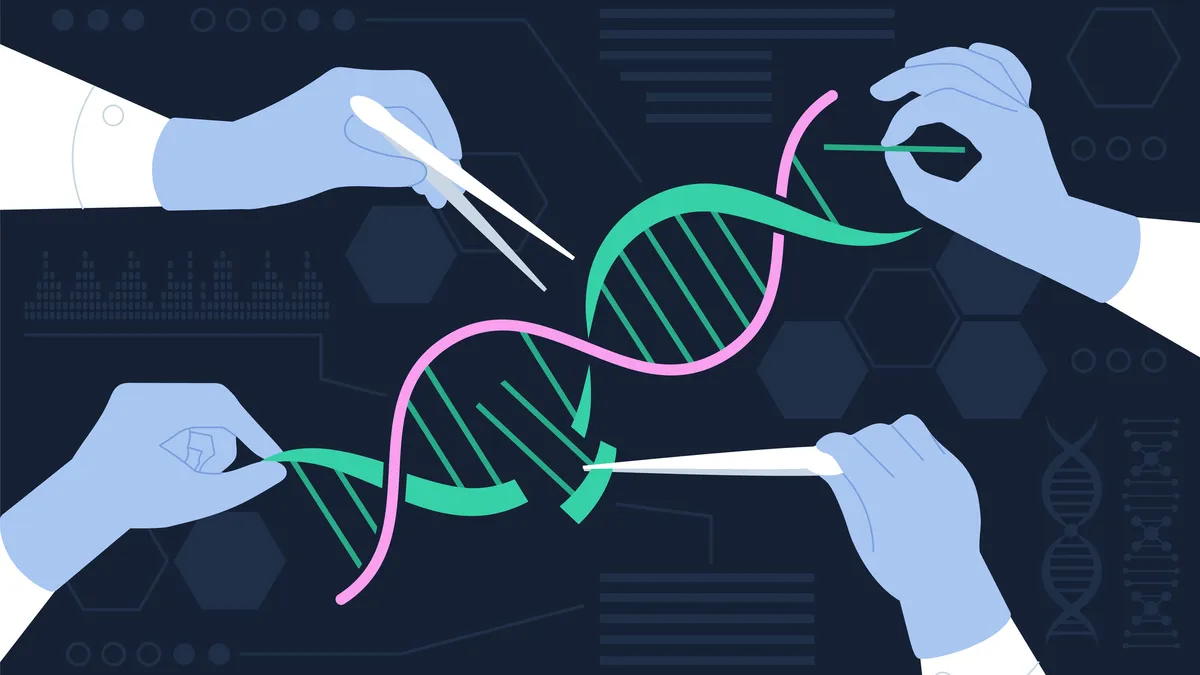Editor’s note: This article has been updated to reflect the FDA’s decision to approve Casgevy.
Gene editing technologies have come a long way in a short period of time.
After about a decade in development, CRISPR is now widely known as a revolutionary gene editing tool potentially offering a wide range of curative treatments. And with the first-ever FDA approval for a CRISPR-based treatment today — Vertex Pharmaceuticals and CRISPR Therapeutics’ Casgevy for sickle cell disease — it’s also one of the buzziest sectors of pharma, already raking in billions in investments and triggering a new drug development heyday.
The roots of this biotech bonanza trace back to the 1980s when Japanese scientists studying E. coli discovered the DNA sequences now known as CRISPR, which stands for clustered regularly interspaced short palindromic repeats. Decades passed, however, before researchers learned how to harness the discovery to develop therapeutics.
One of the critical step changes in this scientific saga came from insights derived from a common refrigerator item: yogurt. In the early 2000s, researchers at the dairy company Danisco attempted to understand why some yogurt cultures were attacked by viruses and observed that the DNA sequence within the CRISPR of the resistant bacteria matched that of the invading virus. The discovery that CRISPR was part of the bacteria’s “adaptive immune system” also illuminated how a CRISPR-associated protein (Cas) could “remember” past viral invaders and attack them when they reappear.
In the years of research that followed, two molecular biologists — Jennifer Doudna and Emmanelle Charpentier — discovered that the protein Cas9 could be used to snip DNA with precision. They published their Nobel Prize-winning work in 2012, giving rise to the CRISPR era.
While other gene editing technologies such as zinc finger nucleases were already in development when CRISPR hit the R&D scene, the newcomer offered a less expensive and more efficient approach.
“CRISPR is a phenomenal technology,” said Jen Klarer, partner and head of cell and gene therapy at The Dedham Group, a consulting agency focused on oncology and specialty therapies. “There is a lot of promise [with CRISPR] and it comes down to how genes are edited with such high specificity.”
Dozens of companies have now sprung up to leverage CRISPR, including Editas Medicine, Caribou Biosciences, Intellia Therapeutics, Beam Therapeutics and CRISPR Therapeutics, which won U.K. approval for Casgevy last month.
Researchers are also investigating many high-profile disease targets for CRISPR, including AIDS, Huntington’s disease, several types of cancer, cystic fibrosis, autoimmune conditions and infectious diseases like COVID-19.
After Casgevy, the next most advanced candidate in the pipeline is Regeneron and Intellia’s treatment for ATTR amyloidosis, greenlighted for a phase 3 trial in the U.S. in October.
Some companies are exploring how different enzymes such as Cas12 and Cas13 could overcome challenges in delivery and off-target effects. Others are advancing candidates that work in vivo as opposed to ex vivo therapies like Casgevy.
And even though CRISPR has revolutionized the field, several gene editing approaches are still being investigated.
“There are a lot of technologies being studied that are medically and clinically impressive,” Klarer said. “We need a lot of years of exploration in this space. There’s not one turnkey solution for all the diseases. The human genome is complex so certain modalities will work better and time will tell which modality works for which disease.”










